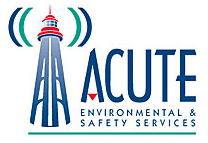Many workplaces require some level of WHMIS symbols training. WHMIS stands for Workplace Hazardous Material Information System. WHMIS training courses provide workers, employers, and supervisors with relevant information under WHMIS 1988 and 2015 ( the most up-to-date version) about the safe handling, storage, and usage of hazardous materials in the workplace. Training courses often include detailed quizzes used to test your knowledge and understanding of various aspects of the WHMIS training. For more information about WHMIS training or workplace health & safety training, contact the experts at ACUTE now!
Looking For WHMIS 2015 (GHS) Training?
WHMIS Symbols

Who Needs WHMIS Training?
Now that you know about some of the changes coming to the WHMIS system, it’s important to understand exactly who needs training. If you are exposed to any chemicals or hazardous products in your workplace, you must receive WHMIS training. WHMIS is for all workers, both new and experienced, and aims to educate workers on the chemicals and hazards they may be exposed to.
You may be surprised as to what counts as a chemical hazard. Even common and household chemicals such as bleach can be considered a hazard!

When Will You Need GHS Training?
You will need WHMIS training if:
- You may be exposed to chemicals or a hazardous product during work activities (this includes normal use, maintenance, and emergencies) ✓
- You use, store, handle, or dispose of hazardous products and materials ✓
- You supervise workers who may be exposed to, use, store, handle, or dispose of hazardous products ✓
- You work in emergency response ✓
Some industries that will need WHMIS training:
- Retailers
- Restaurant Employees
- Medical Professionals
- Construction Workers
- Factory Workers
- and more!
The list above is not exhaustive – remember that WHMIS training is mandatory for any workers who work with or who may even be potentially exposed to hazardous products in the workplace.

Employer Duties
The Occupational Health and Safety Act (OHSA) and WHMIS Regulation set out the duties of an employer at a workplace where hazardous products are used, handled or stored.
The employer is required to:
1. Ensure that hazardous products are identified;
2. Obtain or prepare current SDSs for hazardous products and make those SDSs available to various parties;
3. Ensure that a worker who is exposed or likely to be exposed to a hazardous product receives instruction and training;
4. Assess all biological and chemical agents that the employer produces for its own use to determine if they are hazardous products.

Worker Rights
One of the three basic rights that the OHSA gives to all workers is the right to know about hazards they may be exposed to on the job. Under WHMIS, workers have access to labels, safety data sheets, and training and instruction about hazardous products. In addition, through the joint health and safety committee or health and safety representative, workers have the right to be consulted with about how the WHMIS training is developed and implemented.
Workers also have responsibilities that support the successful implementation of a WHMIS program at a workplace. In general, a worker should:
• Read and follow instructions on product labels and safety data sheets,
• Follow procedures established for the workplace, including the use of personal protective equipment,
• Participate in instruction and training,
• Ask a supervisor if unsure about how to use or handle a particular product, and
• Report to the employer or supervisor any contraventions of the legislation or hazards, such as the absence of a safety data sheet for a new product, or a label that can no longer be read.

Processed with VSCOcam with f2 preset
WHMIS 2015 (GHS) Training Course
ACUTE offers a half-day (4 hours) WHMIS 2015 (GHS) training course. ACUTE’s experienced instructors provide a great classroom learning experience with both face-to-face interactions and detailed handouts and quizzes. Training topics included in ACUTE’s WHMIS GHS training course include:
- Explanation of the employer, supervisor, and worker responsibilities
- How to recognize, assess, and control risks & evaluate the effectiveness of controls
- How to understand the WHMIS 1988 – 2015 labels
- How to understand the WHMIS 1988 – 2015 pictograms (symbols) and understand the hazards that each symbol represents
- Learn to understand the significance of signal words
- And more!
Ready to begin WHMIS training?
WHMIS Symbols Quiz
WHMIS Test Answers and Hints

What is GHS?
GHS stands for the Globally Harmonized System of Classification and Labelling of Chemicals. The GHS is a system that classifies the hazards of chemical products. It also communicates the health and safety information found on labels and spreadsheets. The GHS outlines universal rules. The goal of this system is to put rules regarding chemical classification and labelling in place that everyone around the world can adopt.
As of right now, many countries have different systems for labelling and classifying chemicals. Some countries even have multiple systems coexisting. The new standard helps cut the costs for companies who have had to comply with multiple systems. The new standard also makes it much easier for workers to understand and comply with rules that keep them safe from the hazards of various chemicals.

The Benefits of GHS
According to the Canadian Centre for Occupational Health and Safety (CCOHS), the GHS offers many benefits, including:
- Reducing costs
- Promoting regulatory efficiency
- Providing improved and consistent hazard information
- Promoting better emergency response to chemical incidents
- Reducing the need for animal testing
- And More!
Components of GHS and Implementation Dates

Up until May 31, 2017, suppliers (manufacturers and importers) could use WHMIS 1988 or WHMIS 2015. Beginning June 1, 2017, suppliers will change to WHMIS GHS and employees must be trained on the new standard. Between June 1, 2017 – May 31, 2018, distributors and suppliers who import for their own use can continue using WHMIS 1988 or WHMIS 2015 (until May 31, 2018).
With any new system comes changes and amendments. The two key elements of WHMIS GHS are:
- Classification of the hazards of chemicals according to the GHS rules and regulations
- Communication of the hazardous chemicals using both Safety Data Sheets (SDS) and labels
Source: http://www.ccohs.ca/oshanswers/chemicals/ghs.html

Trust ACUTE. ACUTE helps organizations understand their training challenges while also taking care of the most crucial aspect of a safety program: providing unparalleled tailoring and customer service. Here are just a few things you can expect when training with ACUTE:

- Open Door Instructor-Student Partnership – ACUTE’s training services emphasize client participation. Staff want to build relationships with clients and serve as a touchstone for advice anytime moving forward.
- Serving Your Team and Industry – With a vast array of clients in manufacturing, construction, health, academic, and government agencies, ACUTE brings the best safety practices from across the spectrum to your workplace.
- 100 Years Combined Experience – ACUTE provides comprehensive health and safety training, on-site safety services, and consulting services. With over 100 years of combined experience, our staff offer more than theoretical or abstract ideas. ACUTE offers solutions.
- Track Record of Success – ACUTE is rated 4.9/5 stars on Google reviews, demonstrating a commitment to our clients, quality, and passion for training.
Ready for quality training in your workplace?
ACUTE is located in Waterloo, Ontario and services customers from the cities such as Toronto, Mississauga, Brampton, Hamilton, Milton, Kitchener, London, Guelph, and other cities from across Ontario.
“We have used Acute Environmental & Safety Services Inc. for many years and our personnel always come back well trained, energized and bringing lots of ideas. They are provided with substantial and in-depth knowledge together with challenging opportunities to put into practice what they have learned into our field operations.”
– Dante, Environmental Service Company – Read More Testimonials Here!

